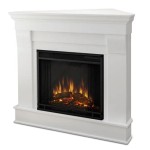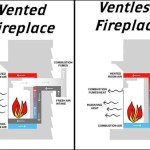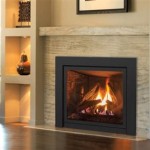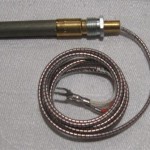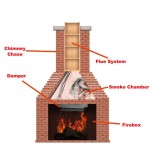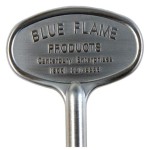Fireplace Baby Proofing: A Comprehensive Guide to Safety
Fireplaces can be a beautiful and comforting feature in a home, particularly during colder months. However, for families with young children, a fireplace presents a significant safety hazard. Infants and toddlers are naturally curious and drawn to explore their surroundings, which can lead to burns, injuries from falling, or other accidents related to unsupervised access to a fireplace. Effective baby proofing measures are therefore crucial to ensure a safe environment for children while still allowing adults to enjoy the ambiance a fireplace provides. This article provides a comprehensive guide to fireplace baby proofing, outlining the various hazards and practical solutions that can be implemented to mitigate risks.
Identifying Fireplace Hazards
The first step in fireplace baby proofing is to identify potential hazards. These dangers vary depending on the type of fireplace, its usage, and the age and developmental stage of the child. Common fireplace-related hazards include:
Burn Risks: The most obvious danger is the risk of burns from contact with hot surfaces. This includes the fireplace facade, the glass door (if present), the fire itself, and any metal components that can become extremely hot during and after operation. Even after the fire has died down, embers and hot surfaces can remain hazardous for an extended period.
Sharp Edges and Protrusions: Many fireplaces have sharp edges or protruding bricks or stones that can cause cuts and scrapes. Toddlers who are just learning to walk or are unsteady on their feet are particularly vulnerable to these types of injuries if they stumble or fall near the fireplace.
Falling Debris: Crumbling bricks, loose stones, or falling soot from the chimney can pose a safety risk. Small children may be tempted to put these materials in their mouths, leading to choking hazards or ingestion of harmful substances.
Fire Tools and Accessories: Fireplace tools like pokers, shovels, and tongs can be sharp and dangerous if left within reach of children. Even decorative logs or kindling can become projectiles if a child decides to throw them.
Carbon Monoxide Poisoning: While less directly related to physical contact, carbon monoxide poisoning is a serious concern with gas fireplaces or wood-burning fireplaces that are improperly vented. A functioning carbon monoxide detector is essential in any home with a fireplace, regardless of whether children are present.
Implementing Fireplace Safety Barriers
A primary method of mitigating fireplace hazards is the use of physical barriers. These barriers create a safe distance between the child and the fireplace, preventing access to hot surfaces, sharp edges, and other potential dangers. Several types of fireplace safety barriers are available, each offering different levels of protection and aesthetic appeal.
Fireplace Screens: Fireplace screens are a common and relatively inexpensive option. They are typically made of metal mesh and are designed to stand in front of the fireplace opening. While screens can prevent embers from escaping, they do not always provide adequate protection from burns because the screen itself can become hot, and a determined child may be able to reach around it. A screen should be securely positioned and heavy enough to prevent it from being easily toppled over.
Fireplace Guards: Fireplace guards are more robust than screens and offer a higher level of protection. These guards are typically made of metal and are designed to enclose the entire fireplace area, creating a physical barrier that is difficult for a child to breach. Some models can be mounted to the wall for added stability. Fireplace guards are available in various sizes and styles to accommodate different fireplace designs.
Custom-Built Barriers: For fireplaces with unusual shapes or dimensions, a custom-built barrier may be the best option. These barriers can be constructed from wood, metal, or other materials and can be designed to blend seamlessly with the existing décor. Custom barriers offer the advantage of being precisely tailored to the specific needs of the homeowner and the configuration of the fireplace.
Play Yards or Baby Gates: In some cases, a play yard or baby gate can be used to create a larger safety zone around the fireplace. This is particularly useful if the fireplace is located in a high-traffic area or if the homeowner wants to restrict access to a wider area. Play yards and baby gates can be easily moved or adjusted as needed.
When selecting a fireplace safety barrier, it is important to consider the following factors: the size and shape of the fireplace, the age and developmental stage of the child, the material and construction of the barrier, and the overall aesthetic of the room. The barrier should be securely installed and regularly inspected for damage or wear.
Additional Safety Measures and Precautions
In addition to physical barriers, several other safety measures and precautions can be taken to further reduce the risk of fireplace-related accidents. These measures include:
Never Leave a Fire Unattended: This is perhaps the most important safety rule. Never leave a fire unattended, even for a few minutes. Children are quick and curious, and it only takes a moment for an accident to occur. If it is necessary to leave the room, extinguish the fire completely or ensure that an adult is present to supervise.
Teach Children About Fire Safety: As children get older, it is important to teach them about the dangers of fire and the importance of staying away from the fireplace. Explain to them that the fireplace is hot and that they should never touch it or play near it without adult supervision. Demonstrate how to safely operate the fireplace and explain the purpose of the safety barrier.
Keep Fireplace Tools Out of Reach: Fireplace tools like pokers, shovels, and tongs should be stored out of reach of children. Consider mounting tool holders on the wall well above a child's reach or storing them in a locked cabinet. If tools must be kept near the fireplace, ensure they are securely positioned and cannot be easily knocked over.
Regularly Inspect and Maintain the Fireplace: Regular inspection and maintenance are essential for ensuring the safe operation of a fireplace. This includes cleaning the chimney regularly to prevent creosote buildup, inspecting the firebox for cracks or damage, and ensuring that the damper is functioning properly. A qualified professional should perform these inspections and repairs.
Install and Maintain Carbon Monoxide Detectors: As mentioned earlier, carbon monoxide poisoning is a serious risk associated with fireplaces. Install carbon monoxide detectors on every level of the home, particularly near sleeping areas. Test the detectors regularly and replace the batteries as needed. If the carbon monoxide detector alarms, immediately evacuate the home and call emergency services.
Store Flammable Materials Safely: Keep flammable materials like wood, kindling, and paper away from the fireplace to prevent accidental fires. Store these materials in a designated area that is well-ventilated and away from heat sources. Never use flammable liquids to start a fire.
Consider Alternative Heating Options: If the fireplace is not essential for heating the home, consider using alternative heating options that are safer for children. Portable space heaters can be used to provide supplemental heat in specific areas, but they should be used with caution and kept out of reach of children. Central heating systems are generally the safest option for heating the entire home.
Secure Loose Objects Nearby: Ensure that any decorative items or furniture near the fireplace are securely positioned and cannot be easily knocked over by a child. Remove any small objects that could be a choking hazard.
Create a Clear Safety Zone: Establish a clear safety zone around the fireplace and discourage children from playing in this area. Use visual cues, such as rugs or furniture placement, to define the boundaries of the safety zone.
Addressing Specific Fireplace Types
The specific baby proofing measures that are necessary will depend on the type of fireplace. Different types of fireplaces pose different hazards and require different safety solutions. The following are some considerations for specific fireplace types:
Wood-Burning Fireplaces: Wood-burning fireplaces require the most extensive baby proofing measures due to the inherent risks associated with burning wood. Embers can escape from the fireplace, the firebox can become extremely hot, and the chimney requires regular cleaning to prevent creosote buildup. A sturdy fireplace guard is essential, and regular chimney inspections and cleanings are highly recommended. The storage of firewood also needs careful consideration to prevent access by children.
Gas Fireplaces: Gas fireplaces are generally safer than wood-burning fireplaces because they do not produce embers or require chimney cleaning. However, the glass door on a gas fireplace can become extremely hot and can cause severe burns. A fireplace guard is still necessary to prevent children from touching the hot glass. Additionally, it is important to ensure that the gas fireplace is properly vented and that a carbon monoxide detector is installed in the home.
Electric Fireplaces: Electric fireplaces are the safest option for families with young children because they do not produce a real flame or emit carbon monoxide. However, some electric fireplaces can still generate heat, so it is important to choose a model that has a cool-touch exterior. Consider also the risk of the electric fireplace toppling over - securing it to a wall or sturdy base is recommended.
Fireplace Inserts: Fireplace inserts, which are installed inside an existing fireplace opening, can be either wood-burning or gas-powered. The baby proofing measures that are necessary will depend on the type of insert. In general, a fireplace guard is recommended to prevent children from touching the hot surface of the insert.
By carefully considering the type of fireplace and implementing appropriate safety measures, it is possible to create a safe and comfortable environment for children while still enjoying the warmth and ambiance of a fireplace. Regular monitoring and adjustments to safety measures as children grow and develop are essential for maintaining a safe home environment.

Diy Baby Proofing Your Brick Fireplace Thisaveragemom

How To Childproof Your Fireplace Baby Proof

Babysafetyfoam Com Baby Proofing Fireplace Hearth Guard Bumper Pad Safety Cushion Cover Protection


How To Baby Proof Fireplace Important Checklist

Baby Proofing Fireplace More Easy Hearth Padding Oh Love

How To Baby Proof Your Fireplace Reviewed

Pin On For The Home

Pin On Diy

Diy Fireplace Hearth Idea For Child Proofing
Related Posts

